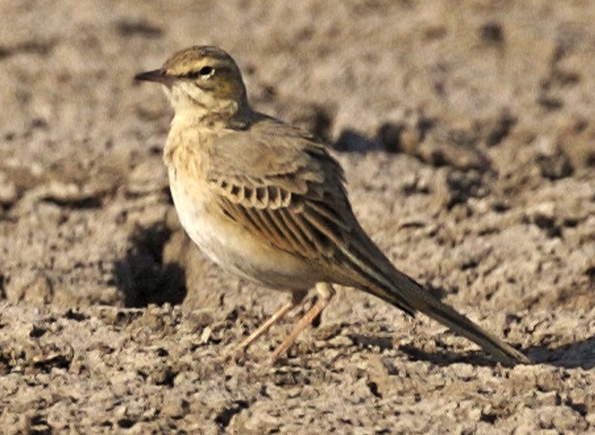Superregnum: Eukaryota
Cladus: Unikonta
Cladus: Opisthokonta
Cladus: Holozoa
Regnum: Animalia
Subregnum: Eumetazoa
Cladus: Bilateria
Cladus: Nephrozoa
Superphylum: Deuterostomia
Phylum: Chordata
Subphylum: Vertebrata
Infraphylum: Gnathostomata
Megaclassis: Osteichthyes
Cladus: Sarcopterygii
Cladus: Rhipidistia
Cladus: Tetrapodomorpha
Cladus: Eotetrapodiformes
Cladus: Elpistostegalia
Superclassis: Tetrapoda
Cladus: Reptiliomorpha
Cladus: Amniota
Classis: Reptilia
Cladus: Eureptilia
Cladus: Romeriida
Subclassis: Diapsida
Cladus: Sauria
Infraclassis: Archosauromorpha
Cladus: Crurotarsi
Divisio: Archosauria
Cladus: Avemetatarsalia
Cladus: Ornithodira
Subtaxon: Dinosauromorpha
Cladus: Dinosauriformes
Cladus: Dracohors
Cladus: Dinosauria
Ordo: Saurischia
Cladus: Eusaurischia
Subordo: Theropoda
Cladus: Neotheropoda
Cladus: Averostra
Cladus: Tetanurae
Cladus: Avetheropoda
Cladus: Coelurosauria
Cladus: Tyrannoraptora
Cladus: Maniraptoromorpha
Cladus: Maniraptoriformes
Cladus: Maniraptora
Cladus: Pennaraptora
Cladus: Paraves
Cladus: Eumaniraptora
Cladus: Avialae
Infraclassis: Aves
Cladus: Euavialae
Cladus: Avebrevicauda
Cladus: Pygostylia
Cladus: Ornithothoraces
Cladus: Ornithuromorpha
Cladus: Carinatae
Parvclassis: Neornithes
Cohors: Neognathae
Cladus: Neoaves
Cladus: Telluraves
Cladus: Australaves
Ordo: Passeriformes
Subordo: Passeri
Infraordo: Passerida
Superfamilia: Passeroidea
Familia: Motacillidae
Genus: Anthus
Species: Anthus campestris
Name
Anthus campestris (Linnaeus, 1758)
Synonymy
Alauda campestris (protonym)
References
Linnaeus, C. 1758. Systema Naturae per regna tria naturæ, secundum classes, ordines, genera, species, cum characteribus, differentiis, synonymis, locis, Tomus I. Editio decima, reformata. Holmiæ: impensis direct. Laurentii Salvii. i–ii, 1–824 pp DOI: 10.5962/bhl.title.542: 166. Reference page.
Vernacular names
العربية: جشنة الصحراء
български: Полска бъбрица
भोजपुरी: एंथस कैम्पेस्ट्रिस
brezhoneg: Sidan-krineg
català: Trobat
corsu: Terraghjola russiccia
čeština: Linduška úhorní
Cymraeg: Corhedydd melyn
dansk: Markpiber
Deutsch: Brachpieper
Ελληνικά: Ωχροκελάδα
English: Tawny Pipit
Esperanto: Sablopipio
español: Bisbita campestre
eesti: Nõmmekiur
euskara: Landa-txirta
فارسی: پیپت دشتی
suomi: Nummikirvinen
føroyskt: Ongtítlingur
Nordfriisk: Hiassparag
français: Pipit rousseline
galego: Pica campestre
magyar: Parlagi pityer
հայերեն: Դաշտային ձիաթռչնակ
italiano: Calandro
қазақша: Түз жадырағы
lietuvių: Dirvoninis kalviukas
latviešu: Stepes čipste
македонски: Полска треперка
नेपाली: धूलिका चुइयाँ
Nederlands: Duinpieper
norsk: Markpiplerke
polski: Świergotek polny
português: Petinha-dos-campos
русский: Полевой конёк
slovenčina: Ľabtuška poľná
svenska: Fältpiplärka
Türkçe: Kır incir kuşu
українська: Щеврик польовий
中文: 平原鹨
The tawny pipit (Anthus campestris) is a medium-large passerine bird which breeds in much of the central Palearctic from northwest Africa and Portugal to Central Siberia and on to Inner Mongolia. It is a migrant moving in winter to tropical Africa and the Indian Subcontinent. The scientific name is from Latin. Anthus is the name for a small bird of grasslands, and the specific campestris means "of the fields".[2]
This is a large pipit, 16 centimetres (6.3 in) long with wing-span 25–28 centimetres (9.8–11.0 in),[3] but is an undistinguished looking species on the ground, mainly sandy brown above and pale below. It is very similar to Richard's pipit, but is slightly smaller, has shorter wings, tail and legs and a narrower dark bill. It is also less streaked. Its flight is strong and direct, and it gives a characteristic "schip" call, higher pitched than Richard's.[3]
Its song is a short repetition of a loud disyllabic chir-ree chir-ree.[3]
In south Asia, in winter some care must be taken to distinguish this from other large pipits which winter or are resident in the area, including Richard's pipit, Blyth's pipit and paddyfield pipit. Tawny pipit is insectivorous, like its relatives.
The breeding habitat is dry open country including semi-deserts. The nest is on the ground, with 4-6 eggs being laid.
In society
The plot of the 1944 film Tawny Pipit is about the rare event of a pair of tawny pipits breeding in England.[4] Eric Hosking's footage of the pipits was actually of meadow pipits because he could not get genuine tawny pipits from German-occupied Europe.[5]
References
BirdLife International (2018). "Anthus campestris". IUCN Red List of Threatened Species. 2018: e.T22718501A131883347. doi:10.2305/IUCN.UK.2018-2.RLTS.T22718501A131883347.en. Retrieved 12 November 2021.
Jobling, James A. (2010). The Helm Dictionary of Scientific Bird Names. London, United Kingdom: Christopher Helm. pp. 49, 87. ISBN 978-1-4081-2501-4.
David William Snow; Christopher Perrins, eds. (1997). The Birds of the Western Palearctic [Abridged]. OUP. ISBN 0-19-854099-X.
Tawny pipit at IMDb
Moss, Stephen. "Brits and their birds". BBC Wildlife Magazine. Retrieved 9 December 2010.
Retrieved from "http://en.wikipedia.org/"
All text is available under the terms of the GNU Free Documentation License


